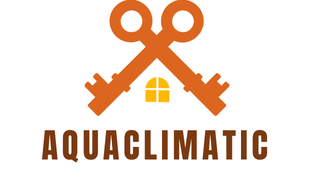Having a swimming pool in your UK-based garden can be the icing on the cake for your house. Not only does it provide a private area for leisure and exercise, but it can also increase the value of your property. However, the task of choosing the correct size and design for your pool can often be daunting. This guide aims to provide you with the necessary information to make a well-informed decision.
The Basics of Pool Sizing
Before you venture into determining the exact dimensions of your pool, understanding the basic principles of pool sizing is crucial. When we talk about the size of a pool, we refer to three main aspects: length, width, and depth.
A lire en complément : What are the costs involved in maintaining a swimming pool in the UK?
What you need to understand is that the size of your pool will significantly impact your garden space, costs, water and heat usage, and the overall design of your garden. To ensure you make the best decision, let’s break down how each of these factors is influenced by your pool’s size.
Many people believe that a large pool is always the best option. Yet, it may not be the most suitable choice for you if you have a small garden, limited budget, or specific design ideas.
Sujet a lire : What are the best safety covers for UK home swimming pools to prevent accidents?
Consider Your Garden Space
The size of your garden largely determines the size of your pool. You need to ensure that your pool complements your garden and doesn’t overcrowd the area. Apart from the pool, you must consider the need for a pool deck, landscaping, and still have some unoccupied space.
To get a clear picture of how much space a pool will take up, you can mark out your desired pool area with a string or garden hose. This will give you a rough idea of how your garden will look once the pool is built.
Remember, the pool should enhance the beauty of your garden, not encroach upon it.
Cost Implications
The construction cost of a swimming pool is directly proportional to its size. Larger pools will obviously cost more to build compared to smaller ones. However, the costs do not stop at construction. Larger pools will require more water, more chemicals for maintenance, more energy to heat, and more time and resources for cleaning.
Therefore, be sure that you are not only prepared for the upfront costs of building the pool but also the ongoing maintenance costs.
The Function of the Pool
The purpose of your pool will significantly influence the size and layout you choose. If your pool is mainly for family fun, then a large, shallow pool may be the best option. On the other hand, if you plan to swim laps or have a deep-diving area, a long and narrow pool design with varying depth could be the best choice.
Family Fun
When your pool is mainly for family fun and relaxation, the size isn’t as crucial as the design. You might want to consider a pool with a large shallow end for children to play in. Additionally, a decent-sized pool deck for sun loungers and garden furniture can enhance the pool area.
Lap Swimming and Exercise
If you or any family member is an avid swimmer, a lap pool would be ideal. These pools are usually long, straight, and have a uniform depth. They are designed to provide a straight path, ideal for swimming laps.
Heat and Maintenance
Heating and maintaining your pool are two vital aspects that you should consider when deciding its size.
Heating Your Pool
The larger the pool, the more energy will be needed to heat it. If you plan to use your pool all year round, consider the energy costs when deciding the size of your pool. In the UK, where the climate can be chilly even during the summer, a pool heating system might be necessary.
Maintenance
A larger pool requires more effort to maintain. Cleaning, applying chemicals, and ensuring the water is safe and clean will take time and resources. Remember, the bigger the pool, the more work it will require.
Building Regulations
In the UK, you may need to apply for planning permission to build a pool. The size and depth of your pool, its proximity to the house and boundary, and any associated buildings like a pool house or changing rooms all factor into whether you’ll need to apply for planning permission.
While there is no set size that triggers the need for planning permission, it’s always a good idea to check with your local council or a planning consultant to be sure.
In Ground or Above Ground: Which is the Best Option?
In-ground and above-ground pools each have their own advantages and restrictions when it comes to size. An in-ground pool allows for more flexibility in size and shape but requires a significant amount of construction. On the other hand, above-ground pools are usually available in preset sizes and shapes but are faster and less expensive to install.
In conclusion, choosing the right size of pool for your UK garden involves numerous considerations. From assessing the available space in your garden, contemplating the function of the pool, to factoring in heating and maintenance costs, and understanding building regulations, every aspect plays a pivotal role in making the right choice.
Pool Design and Aesthetic Considerations
When choosing the right size and shape for your swimming pool, it’s essential to consider the overall aesthetic of your garden. Your pool should not only serve its practical purpose, but it should also be a visually appealing addition to your outdoor space.
Complementing Your Garden Design
When selecting a swimming pool, consider a design that complements the existing features of your garden. You may want to match the pool’s shape with your garden’s layout or create contrast with a unique design. For instance, angular pools can create a modern look, while curved pools may provide a more natural feel, akin to a pond or lake.
Remember, the pool’s design is as important as its size. A well-chosen pool can turn your garden into a tranquil oasis or a lively entertainment hub.
Incorporating a Water Feature
Adding a water feature like a waterfall or fountain can enhance the appeal of your pool. These features contribute to the aesthetic of the pool area and create a relaxing atmosphere with the soothing sound of moving water. However, keep in mind that adding a water feature will require additional space and may impact the overall size of your swimming pool.
Lighting and Accessories
Thoughtful lighting can dramatically transform the appearance of your pool area after dark. Submerged lights, for instance, can make your pool shimmer and glisten at night, creating a magical setting. Additionally, accessorising with pool furniture, an outdoor shower, or even a hot tub can enhance the overall pool experience but will require careful planning to ensure they fit comfortably within your available space.
Conclusion
In summary, choosing the right size of swimming pool for your UK garden requires careful consideration. You need to take into account the available garden space, the function of the pool, the heating and maintenance costs, and the local building regulations. It’s essential to remember that your swimming pool is more than a place to swim – it’s a central feature that can enhance the beauty and functionality of your garden.
By taking the time to plan and consider your needs and preferences, you can ensure that the pool you choose is the perfect fit for your garden, your lifestyle, and your budget. A well-chosen, well-placed pool can provide countless hours of enjoyment, relaxation, and exercise for you and your family, adding immeasurable value to your home.
Whatever size and type of pool you choose, be it an in-ground pool, above-ground pool, or even a swim spa, it should ultimately serve your needs and blend seamlessly with your garden, enhancing its overall charm and appeal. Happy planning for your project!











